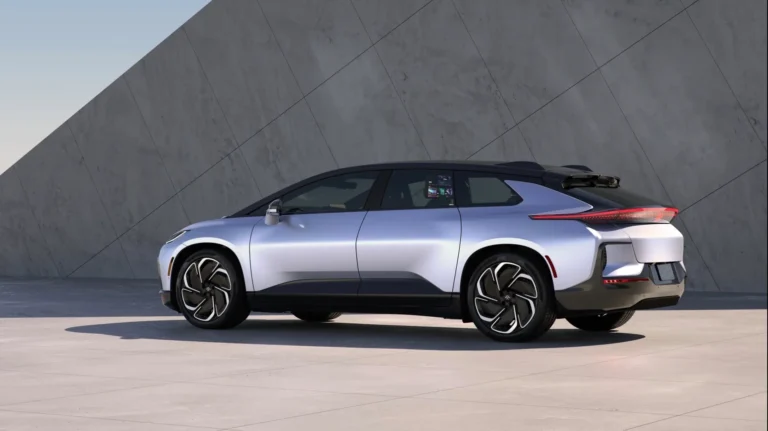
VeriSilicon Enhances GPGPU-AI Computing IPs to Accelerate Innovation in Automotive Electronics and Edge Server AI
VeriSilicon a prominent global provider of silicon platform services, has unveiled major advancements in its high-performance and scalable GPGPU-AI computing intellectual properties (IPs), signaling a significant leap forward in enabling next-generation automotive electronics and edge server AI solutions. The newly enhanced computing IPs are tailored to meet the rising demand for intelligent processing capabilities in thermally and power-constrained environments, offering unprecedented performance, flexibility, and scalability.
At the heart of VeriSilicon’s latest innovation is the integration of programmable parallel computing with a purpose-built Artificial Intelligence (AI) accelerator. This tightly coupled architecture enables exceptionally dense computing power, which is essential for a growing range of advanced AI workloads, including real-time decision-making, multimodal perception, and Large Language Model (LLM) inference. These workloads are increasingly deployed in mission-critical edge scenarios such as autonomous vehicles, industrial robotics, and edge servers where latency, efficiency, and thermal control are paramount.
GPGPU-AI Architecture: Purpose-Built for Complex AI Workloads
VeriSilicon’s GPGPU–AI computing IPs are built on a cutting-edge General Purpose Graphics Processing Unit (GPGPU) framework with an integrated AI accelerator designed specifically for modern AI processing tasks. The AI accelerator is equipped with a sparsity-aware computing engine that significantly boosts performance on transformer-based and matrix-heavy models—architectures that form the backbone of most advanced AI applications, including generative AI and large-scale recommendation engines.
The solution also incorporates a range of advanced scheduling techniques, ensuring optimal utilization of compute resources and efficient execution of highly parallel AI operations. This architecture enables support for Mixture-of-Experts (MoE) models—an emerging AI model class that dynamically activates subsets of neural network parameters to reduce computational burden without compromising output quality. By optimizing inter-core communication and leveraging advanced memory access schemes, VeriSilicon’s architecture ensures smooth, high-throughput performance for these complex, dynamic models.
Broad Data Format Support for Mixed-Precision AI
To cater to the diverse precision requirements of modern AI tasks, VeriSilicon’s GPGPU-AI IPs offer extensive support for mixed-precision data formats. These include low-bit formats like INT4 and INT8, floating-point formats such as FP4, FP8, FP16, FP32, FP64, BF16 (bfloat16), and Google’s TF32 (TensorFloat-32), ensuring optimal tradeoffs between speed, accuracy, and power consumption across a wide range of use cases. The flexibility in precision empowers developers to tune performance metrics according to specific application needs—from ultra-low latency decision-making to high-precision model training.
In high-end applications where large volumes of data must be processed and stored, memory bandwidth becomes a key bottleneck. VeriSilicon addresses this challenge through native support for high-bandwidth memory interfaces, including 3D-stacked memory, LPDDR5X, and HBM (High Bandwidth Memory). These technologies drastically reduce latency and increase memory throughput, which is essential for real-time AI inference and training at the edge. Furthermore, the IPs support next-generation I/O interfaces such as PCIe Gen5/Gen6 and Compute Express Link (CXL), facilitating fast communication between multiple chips and cards.
Scalable for Edge and Enterprise-Class AI
One of the most important features of the new GPGPU-AI IPs is their scalability. The architecture is designed for multi-chip and multi-card expansion, allowing systems to be scaled out horizontally to accommodate growing AI compute demands. This makes them particularly well-suited for data center edge deployments and intelligent vehicle platforms, where both computing density and thermal efficiency are critical.
The scalable nature of the platform supports seamless integration into larger system-on-chip (SoC) or system-in-package (SiP) designs, helping customers achieve tailored computing configurations for different classes of AI applications. From compact in-vehicle systems to large-scale edge server racks, VeriSilicon’s GPGPU-AI solutions can be adapted for diverse deployment scenarios.
Developer-Friendly Ecosystem and Broad Framework Support
To accelerate adoption and deployment, VeriSilicon has ensured that its GPGPU-AI computing IPs are natively compatible with leading AI development frameworks and toolchains. These include PyTorch, TensorFlow, ONNX (Open Neural Network Exchange), and TVM (Tensor Virtual Machine), enabling seamless model training and inference across platforms.
Additionally, the IPs are compatible with the General Purpose Computing Language (GPCL), which aligns with mainstream GPGPU programming languages such as CUDA and OpenCL. This compatibility ensures developers can use familiar tools and compilers, minimizing the learning curve and integration time required to leverage VeriSilicon’s technology.
Strategic Vision and Market Alignment
Weijin Dai, Chief Strategy Officer, Executive Vice President, and General Manager of VeriSilicon’s IP Division, emphasized the company’s commitment to pushing the envelope of what’s possible in edge AI and automotive computing.
“The demand for AI computing on edge servers, both for inference and incremental training, is growing exponentially. This surge requires not only high efficiency but also strong programmability,” said Dai. “VeriSilicon’s GPGPU-AI computing processors are architected to tightly integrate GPGPU computing with AI acceleration at fine-grained levels. The advantages of this architecture have already been validated in multiple high-performance AI computing systems.”
Dai highlighted how breakthroughs by companies like DeepSeek, which are pioneering large-scale LLMs and MoE architectures, are reshaping the landscape of edge and automotive AI requirements. He noted that VeriSilicon’s latest enhancements are designed to meet these escalating demands, supporting both the computational intensity and the evolving software paradigms of the AI ecosystem.
He further explained how close collaboration with leading AI customers has informed the refinement of the company’s architecture, particularly in maximizing the benefits of emerging memory technologies like 3D-stacked DRAM. These collaborations have resulted in systems that not only scale more efficiently but also handle AI workloads with higher energy efficiency and better thermal performance.
Ecosystem Collaboration and Future Outlook
VeriSilicon continues to work closely with ecosystem partners, including AI model developers, semiconductor manufacturers, and software tool vendors, to foster widespread adoption of its GPGPU-AI computing IPs. By creating a robust ecosystem that supports rapid deployment and real-world scalability, the company aims to empower customers across industries—from automotive OEMs and Tier 1 suppliers to cloud-edge service providers and AI startups.
Looking ahead, VeriSilicon’s roadmap includes ongoing enhancements to its IP portfolio, with a focus on optimizing performance-per-watt, expanding support for new AI models and frameworks, and integrating next-generation connectivity and memory standards. As edge AI and automotive intelligence become more central to the digital infrastructure of the future, VeriSilicon is positioning itself as a key enabler of scalable, high-performance, and flexible computing solutions.







